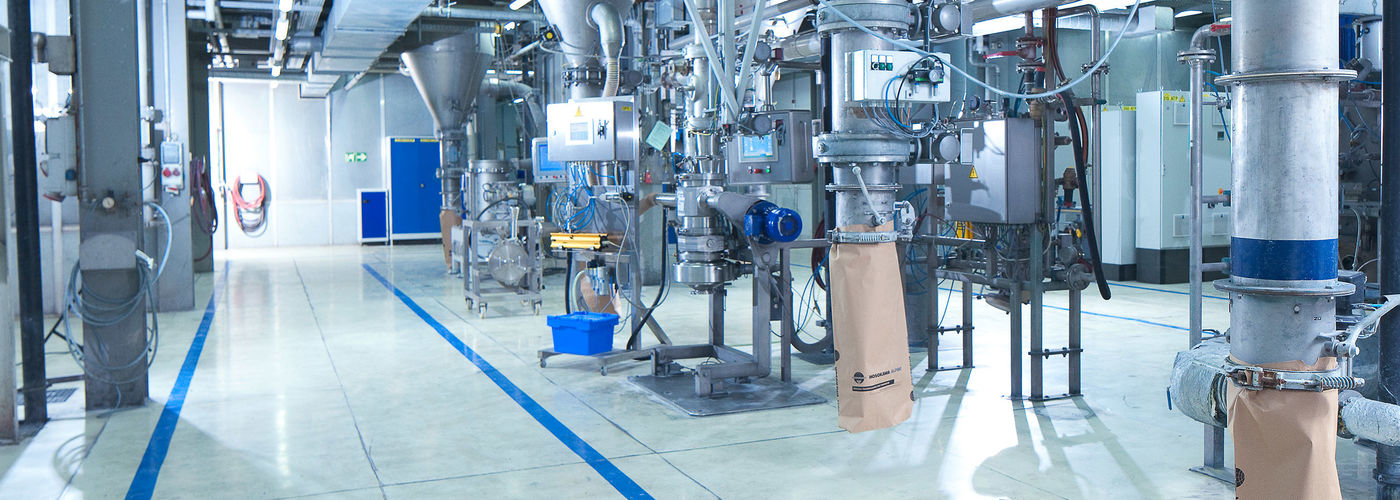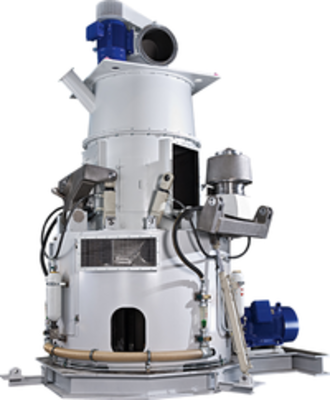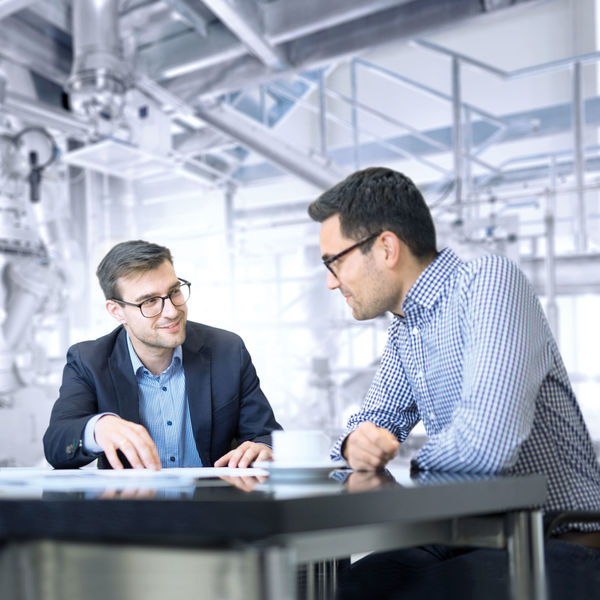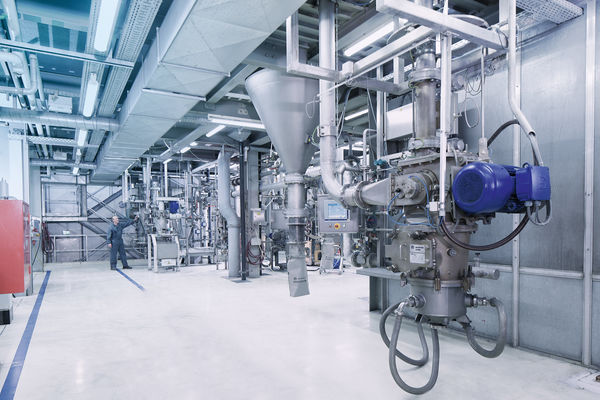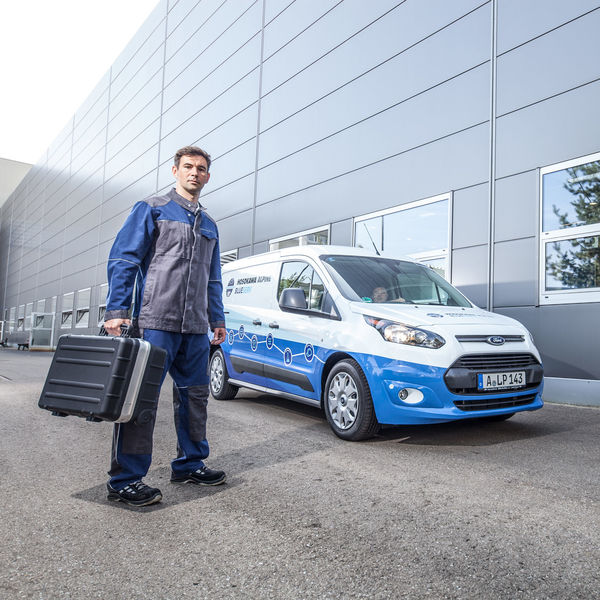Młyny walcowe działają zgodnie z zasadą rozdrabniania przez nacisk, dzięki czemu nadają się do kruchych, ale elastycznych produktów paszowych. Produkt jest poddawany naprężeniom ściskającym pomiędzy stołem mielącym a rolkami mielącymi. Specyficzna siła mielenia (siła nacisku podzielona przez powierzchnię przekroju poprzecznego walca mielącego) zawiera się w przedziale od ok. 0,5 do 1 N/mm², przy czym efektywne naciski w złożu materiału są naturalnie znacznie wyższe. Stół mielący jest wprawiany w ruch obrotowy przez silnik i odpowiednią przekładnię, przy czym stosowane są prędkości obwodowe od 2 do 6 m/s. Ponieważ przekładnia musi przejmować siły walców mielącyh, jest ona wyposażona w łożyska osiowe(łożysko segmentowe).
Produkt jest podawany na środek stołu mielącego, gdzie siła odśrodkowa przenosi go przez stół mielący na jego obrzeża. W tym czasie walce mielące wielokrotnie obracają się nad produktem miażdżąc go. Walce mielące dociskane są hydraulicznie do stołu , gdzie wahania występujące podczas pracy buforowane są przez hydrauliczny akumulator gazowy napełniony sprężonym powietrzem. Stół mielący jest wyposażony w jaz na jego krawędzi; wysokość jazu może być wybierana w celu ustawienia czasu przebywania produktu w strefie mielenia. Wokół stołu mielącego umieszczony jest pierścień dysz, z którego z dużą prędkością wydostaje się doprowadzane powietrze. Rozdrobniony produkt jest transportowany w górę do zintegrowanego klasyfikatora powietrza; odrzucony gruby materiał jest zawracany na stół mielący w celu dalszego rozdrobnienia. Produkt końcowy jest oddzielany od powietrza w umieszczonej za nim jednostce zbierającej.
